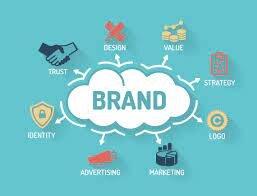Unlock the Power of Print in the Digital Era
If you are a marketer or a brand seeking innovative ways to use the power of print ads in the digital era, you are in for a delightful treat. This article delves into a comprehensive exploration of the relevance and benefits of print advertising amidst the digital landscape. Discover the seamless integration of print ads with cutting-edge digital media tools, unravelling the potential for a powerful marketing strategy. Uncover the advantages and limitations of leveraging print advertising in tandem with digital channels to fortify your brand. With insights into this dynamic blend, you will gain valuable knowledge to optimise your marketing efforts. So, dive into the captivating world of print and digital integration to elevate your brand's presence and impact!

Table of contents:
- ● Unlock the Power of Print in the Digital Era
- ● Understanding the Evolving Landscape of Print Advertising
- ● The Role of Digital Platforms in Modern Advertising
- ● Advantages of Integrating Print and Digital Advertising
- ● Creative Strategies for a Harmonious Integration
- ● Overcoming Challenges in Print-Digital Integration
- ● Case Studies: Successful Print-Digital Integration Campaigns
- ● The Future of Print Advertising in the Digital Age
- ● Embrace the Power of Print and Digital Fusion for Lasting Brand Success
Understanding the Evolving Landscape of Print Advertising
Print advertising has been an essential aspect of marketing for centuries, playing a crucial role in brand marketing for the promotion of products and services. Print ad materials, such as brochures, flyers, posters, and magazines, are used by brands as an integral part of marketing. Print ads get massive conversions for brands and are well known to engage the senses that create a lasting impression on customers, thus helping brands build a solid foundation and a loyal fan base.
In the digital age, where online video ads and social media brand promotion campaigns dominate the market, print advertising still stands out as a vital component of 360 marketing. It is well known that print advertising held a dominant place in the market before the advent of digital ads as it allows businesses to explore niche markets and demographics that may not be easily reached through digital means. Audiences like boomers and older millennials are difficult to reach via digital means and respond well to print ads such as newspapers, flyers, magazine ads, and more.
Today brands utilise the fusion of both print advertising along with digital marketing to collect data, analyse customer behaviour, and optimise their marketing campaigns for better results which provides massive reach and revenue to the brand. Integrated campaigns that combine both print and digital elements have proven to be highly effective for many brands. Print advertising offers the following benefits:
- Print advertising provides distinct advantages, allowing businesses to connect with their target audience and niche markets in tangible ways. The physical nature of print ads elicits a sensory experience that digital mediums cannot replicate, establishing a memorable and enduring impression.
- Print ads excel in catering to consumers' preferences and interests on a local level. They effectively engage audiences that are challenging to reach through digital means, providing a targeted approach to regional marketing.
- Print ads combat ad fatigue, a common challenge in digital marketing, by offering a refreshing break from the digital overload. This respite allows brands to maintain consumer interest and foster higher brand recall, solidifying their presence in the minds of their audience

The Role of Digital Platforms in Modern Advertising
With the improved usage of digital platforms for brand marketing, such as social media, search engine marketing, and display advertising, how businesses connect with their target audience has changed massively on the one hand but has also significantly impacted traditional print advertising on the other hand.
Businesses these days are taking advantage of this transition to the digital way of marketing and selling. Facebook, Twitter, and Instagram have transformed into virtual marketplaces, providing businesses with opportunities to interact with millions of users and potential customers. Also, search engine marketing, through search engine optimisation (SEO) and pay-per-click (PPC) advertising, offers more reach to brands by appearing prominently on search engine results pages. But all of these advanced mediums have made print ads somewhat redundant. Print media cannot compete with the high reach and availability that modern digital marketing offers.
However, print advertising still stands its ground and can be a valued marketing asset when used strategically. Marketers and brands can make use of the following tips to make a comprehensive marketing strategy and use both print ads and digital marketing for the best growth and results:
- Businesses with niche markets can strategically use print media to target specific demographics precisely. By combining print and digital platforms, they can ensure comprehensive market coverage, reaching a broader audience while retaining the personalized touch that print provides.
- Digital tools are essential for growth marketing, but print ads shine in brand marketing. Print advertising instils trust and credibility, creating a tangible connection with consumers. On the other hand, digital content excels in user-generated content (UGC), leveraging the authenticity of actual customers to foster engagement and advocacy.
- Print ads are potent tools for building brand awareness, as they offer tangible and visually engaging experiences. Meanwhile, digital tools complement the process by aiding brand recall through targeted online campaigns. The combination of print and digital ensures a well-rounded branding strategy, strengthening a brand's presence throughout the customer journey.
This way, by using both print and digital platforms, brands can create a cohesive marketing strategy that maximises their reach, engagement, and impact.
Advantages of Integrating Print and Digital Advertising
Now that we understand the role of print and digital advertising in marketing individually, it is time to explore what benefits can be enjoyed when both print and digital advertising are integrated with the marketing funnel. Integrating print and digital advertising offers a powerful combination that can significantly enhance brand visibility and engagement and thereby increase return on investment (ROI). By leveraging the strengths of both mediums, companies can utilise all of the following benefits:
- Brand Visibility: Print advertising, such as brochures, flyers, and magazines, allows brands to reach their audience in various environments physically. When combined with digital ads and videos, these mediums create a powerful presence ensuring higher brand visibility and recall
- Target Audience: Combining print and digital advertising allows brands to tap a wider customer radar. While younger millennials, GenZ and GenX gravitate more toward digital campaigns, print appeals more to older millennials and boomers. Using both print and digital means ensures a wider target audience
- Higher Engagement: Print advertising holds the advantage of creating brand recall and memory, while digital tools ensure customers are up to date with all the brand trends and offers
- Improved ROI: Combining print and digital advertising creates a smart marketing strategy that ensures an improved ROI at the same cost as digital-only marketing.
- Filling the Gap between Online and Offline: The integration of print and digital advertising bridges the gap between online and offline experiences, providing consumers with an interactive brand journey.
- Break from Ad Fatigue: In a digital-savvy world, print advertising offers a much-needed break from online ad fatigue. This is bound to happen with the never-ending ads and reels we see every day. Print ads provide relief from screen time and also help in capturing consumers' attention which can build brand recall. This dramatically improves the brand experience and helps with sales
Creative Strategies for a Harmonious Integration
To utilise the benefits of fusing print and digital advertising, brands need to use innovative ways to build marketing strategies that combine both mediums and bring maximum revenue to the table. By doing so, brands can effectively reach their target audience and improve the marketing strategy with the data retrieved from the response of such campaigns and build on it. Here are a few creative approaches to seamlessly merging digital and print advertising to get maximum results:
- Cross-Channel Campaigns: Brands can run cross-channel campaigns that offer a cohesive brand experience. This approach ensures that the message reaches a broader and enhances brand visibility and recall. This can be achieved by using consistent visuals and themes across digital and print ads
- QR Code Utilisation: QR codes act as a bridge between the physical and digital marketing mediums. Brands can make use of QR codes in their print ads to direct consumers to interactive online content or exclusive offers. This practice also provides real-time data on the conversions achieved via print ads
- Use of Interactive Elements: Incorporating interactive elements into print ads increases audience engagement massively. The use of cohesive branding across all marketing channels plays a huge role in the same. These experiences leave a lasting impression on the consumer's mind and help in building a connection with the brand
- Synchronised Messaging: This refers to cohesive branding in both digital and print ads to ensure brand recall. This practice helps in achieving a smooth brand experience and helps in forming a consistent brand
By seamlessly integrating print and digital strategies, brands can establish a competitive edge, ensuring they stand out in the market. This innovative fusion enhances brand presence and creates a memorable experience for the target audience, leading to lasting connections and increased brand loyalty.
Overcoming Challenges in Print-Digital Integration
Though the integration of print and digital advertising presents a variety of opportunities for brands to engage with consumers, we need to understand that no marketing plan comes without problems. Brands can face multiple hurdles when combining print and digital advertising that can affect revenue and brand value. Following is a rundown of all the challenges faced in the attempt to combine print and digital advertising, along with the best solutions to combat these issues:
- Maintaining Brand Consistency: Ensuring brand consistency across both print and digital channels can be challenging due to differences in the possibility of design and the impact of messaging. To overcome this challenge, brands should establish clear guidelines to ensure cohesive branding across all channels
- Managing Data Privacy: Integrating print and digital advertising requires the collection and utilising consumer data. This practice poses a risk to data privacy concerns, especially in the age of increased cybercrimes. To tackle this challenge, brands must prioritise incorporating robust security measures, content transparency, and consent at all steps
- Marketing Campaign Evaluation: Measuring the impact of integrated print and digital marketing campaigns can be a complex task. Print ads inherently lack the benefits of data analytics that are always provided by digital channels. To deal with this problem, brands can incorporate elements like QR codes or personalised URLs (PURLs) into their print materials. These tools enable data tracking and allow brands to optimise future campaigns
- Balancing Budget and Resources: Integrating print and digital advertising may require additional resources and budget allocation. Brands should prioritise strategic planning and allocation of resources to ensure a balanced approach
Case Studies: Successful Print-Digital Integration Campaigns
Take a look at these real-life examples of how brands effectively merged print and digital advertising to achieve outstanding results.
- Spotify's Outdoor Ad Campaign: This campaign was started in 2016 and is now a part of their annual marketing campaign. This integration of billboards and video ads resulted in the massive success of the brand. Since then, Spotify has been putting up billboards and banners of captivating copies to drive audiences to the music streaming platform
- Burger Kings Burning Store Ad Campaign: This campaign used print and digital media to market the food chain's "Flame grilled burgers since 1954" slogan and caught many eyes, which led to massive sales for the brand
- Nivea's Men's Wrinkle Cream Ad Campaign: Nivea launched a creative campaign for the launch of their new wrinkle cream. This ad used both print and digital media to gain attention and bring sales to the new product
The Future of Print Advertising in the Digital Age
In the fast-paced digital world, the future of print advertising may seem uncertain. However, print advertising can be used innovatively and used along with digital tools for the best marketing campaigns. A blend of print and digital advertising will play a dynamic role in driving engagement and impact in the years to come. Here are a few tips that can be useful for brands looking forward to combining print and digital ads:
- QR Codes: QR codes will continue to play a significant part in bridging the gap between print and digital advertising. By scanning QR codes, consumers can access digital content like promotions, trends, and offers provided in the print ad.
- Sustainable and Eco-Friendly Printing: In response to growing environmental concerns, sustainable printing practices will gain traction. Brands that leverage advertising print ads via eco-friendly materials, biodegradable inks, and energy-efficient ways will gain popularity over others.
- Smart Packaging and Print Advertising: Print advertising will also include smart packaging. This integration of print advertising with packaging enhances brand engagement and helps build brand loyalty.
- Enhanced Print Production Techniques: Advancements in printing technologies will help brands create visually stunning and attention-grabbing print materials. High-definition printing, holographic effects, and 3D printing will take print advertising to new heights in the coming years. These practices, combined with digital tools, can significantly help with marketing in the future.
- Integration of Social Media and User-Generated Content (UGC): Brands will harness the power of social media and UGC in print advertising in the coming years.
Embrace the Power of Print and Digital Fusion for Lasting Brand Success
In today's fast-paced and ever-evolving landscape, maintaining relevance and sustaining consistent sales is a pressing challenge for brands. However, the key lies in reaching the maximum number of consumers effectively, and this is where print ads emerge as a vital tool. By implementing the tips and insights shared above, brands can craft powerful marketing campaigns that seamlessly integrate print and digital ads. This cohesive approach creates a solid, well-rounded branding strategy that not only resonates with the audience but also becomes a revenue-driving force. Embracing this dynamic fusion of print and digital ensures survival and success in a highly competitive market, guaranteeing enduring brand presence and prosperity.

Rahul Shevde








